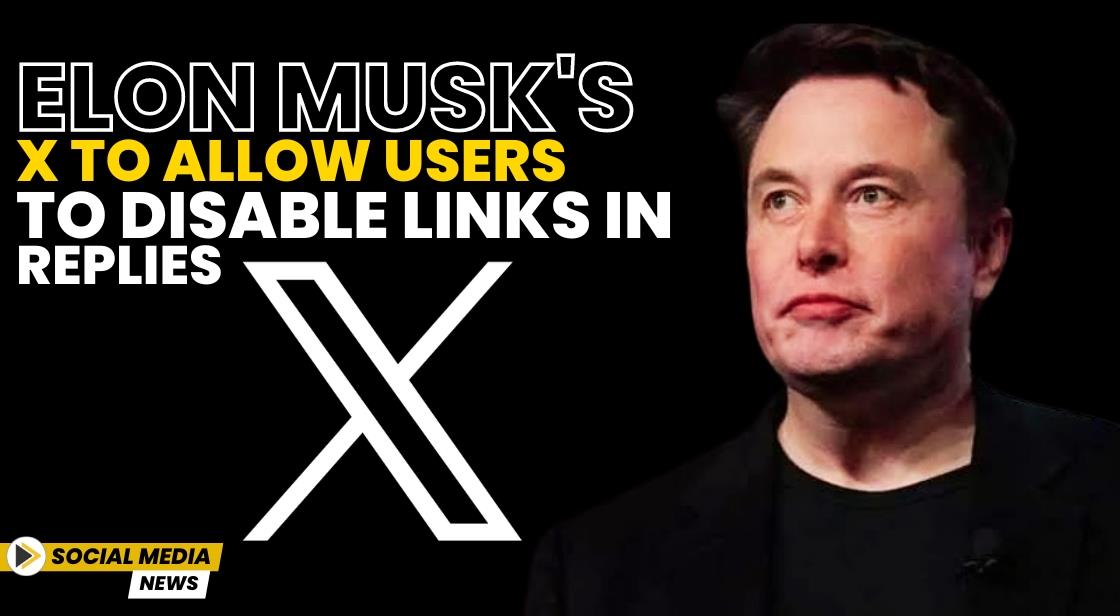Elon Musk's X to Allow Users to Disable Links in Replies

News Synopsis
A new feature is brewing on X (formerly Twitter) that empowers users to take control of their online experience. The platform is testing a functionality that allows users to disable links within replies to their posts. This move is widely seen as a potential weapon against the persistent issue of spam bots that bombard X with irrelevant and often promotional links.
Unveiling the Feature: How It Works (and What We Don't Know Yet)
While the feature hasn't been officially announced by X, independent app researcher Nima Owji first spotted it and its existence was later confirmed by Christopher Stanley, X's senior director for security engineering.
Here's what we know so far:
-
Disabling Link Functionality: Users will have the option to disable links within replies to their posts, potentially creating a cleaner and less cluttered communication space.
-
Impact on Spam Bots: This feature is primarily seen as a tool to combat spam bots, which typically rely on posting links in replies to gain traction or spread misinformation.
However, some uncertainties remain:
-
Free vs. Paid Users: It's unclear whether this feature will be available to all users or limited to X's paid subscription service.
-
Potential Drawbacks: While the feature can deter spam, it could also hinder genuine attempts to fact-check posts or share relevant information through links.
Musk's Anti-Spam Crusade: A Continued Focus
The introduction of this feature aligns with Elon Musk's ongoing efforts to tackle spam bots and enhance user security on X. Since acquiring the platform, Musk has made combating spam a top priority.
-
"Purge of Bots & Trolls": Earlier this year, Musk declared a "systemic purge of bots & trolls" on X, vowing to track down those responsible and pursue legal action.
-
Testing "Not a Bot" Program: A pilot program was also rolled out in select countries, requiring new users to pay a small annual fee to access basic functionalities like replying, liking, or bookmarking posts. This initiative aimed to discourage the creation of automated bot accounts.
The future of the link-disabling feature and its accessibility to all users remain to be seen. However, it signifies a step towards a potentially cleaner and more secure online environment on X.
Conclusion: A Double-Edged Sword? X Tests User Control Over Links in Replies
The potential introduction of a link-disabling feature on X (formerly Twitter) presents a thought-provoking scenario. While it empowers users to combat the nuisance of spam bots and potentially cultivate a more focused online space, it also raises questions about potential drawbacks.
Curbing Spam Bots: The feature's primary benefit lies in potentially curbing the activity of spam bots that rely on posting irrelevant links in replies. This could significantly improve the user experience by minimizing exposure to unwanted content and misinformation.
Unintended Consequences?: However, the ability to disable links entirely might also hinder genuine attempts to fact-check information or share relevant links that add context to a discussion. Finding the right balance between user control and fostering open information exchange will be crucial.
Unanswered Questions: The lack of clarity regarding the feature's availability (free vs. paid users) adds another layer of complexity. Ideally, an accessible and well-defined implementation would be most beneficial.
A Step Towards a Safer X?: Despite the uncertainties, this feature signifies X's ongoing efforts to address user concerns about spam and online safety under Elon Musk's leadership. Whether it ultimately proves to be a powerful weapon against spam or an unintended roadblock to open communication remains to be seen. In the coming months, it will be interesting to observe how X rolls out this feature and how users react to this new layer of control over their online interactions.
You May Like









